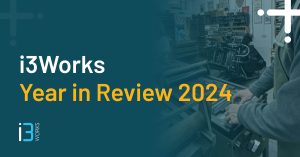By Vawns Murphy
In the immortal words of the Coca-Cola ads (you know the one) “the holidays are coming”, as is the time to start thinking about the Christmas change freeze. Not all organisations need to stop all change activity but if you work in a highly regulated industry such as finance, healthcare or defence, then a change freeze will be a standard part of your operating model to ensure system stability during the holidays.

What Is a Change Freeze?
A change freeze refers to a period where no non-emergency changes are allowed, and only urgent, high-priority changes are processed. They are typically used in organisations where stability is critical and the tolerance for risk is very, very low.
Know Your Pain Points
First things first. Talk to your delivery teams and figure out when cover will be limited. The holiday season means annual leave and bank holidays so in general it’s not a great time to make changes to production systems. By restricting change, we increase stability by lowering our risk profile. It’s also worth bearing in mind that fewer staff on the ground means increased time to resolution so anything we can do to reduce the potential for downtime is key. Once you have your dates, get sign-off from senior management so that everyone is in agreement.
Have a Plan
Review all planned changes and assess their needs. Prioritise high-priority, risk-mitigating changes that must be completed before the freeze. If applicable, coordinate with other departments that may be affected by the freeze, such as security, operations, and project management teams, to ensure there are no overlapping or conflicting activities.
Tell People
The next step is to document the change freeze dates and times so that you can let people know when it is happening. Make sure that the change freeze is communicated well in advance, allowing enough time to identify all planned changes that need to be rescheduled or completed before the freeze period. When communicating the change freeze details, don’t forget to confirm if the dates are inclusive and account for any time zone differences. Use e-mail and SharePoint, put a notice on your Service Desk portal reminding people that there will be no BAU changes during the freeze period. Remind people at CAB in the weeks leading up to the freeze so that no one can forget or get mixed up over the dates.
Set Expectations
As well as dates, let colleagues know the scope, rationale, and expectations during the freeze so they can plan and act accordingly. If applicable, notify customers and users about the change freeze and its impact on service delivery. Ensure that expectations are aligned regarding any maintenance, updates, or service changes.

Plan for Exceptions
There will inevitably be exceptions to a change freeze, so it’s essential to plan for them in advance to avoid chaos after the holiday period. Service desks will already be handling numerous “I’ve forgotten my password” calls, so reducing preventable issues is crucial. While restricting change minimises risk, certain scenarios—like security updates, urgent business deliverables, or break-fix work—may require action even during a freeze.
Establish a clear process for managing urgent or emergency changes that can’t wait. Prepare change forms and approval templates ahead of time. This avoids the stress of crafting explanations for senior management when you’re tired, under pressure, and short-staffed.
Define exception criteria to provide clear, defensible justifications for work during the freeze. Examples might include addressing legal, financial, or reputational risks; resolving major incidents or preventing them; or applying critical vulnerability patches.
Ensure the appropriate level of approval is obtained for any exceptions. Emergency changes during a freeze should typically have senior management sign-off, reflecting their significance. Agree on an escalation matrix in advance to streamline the approval process. By planning exceptions thoughtfully, you can maintain operational stability while addressing critical needs effectively.
Monitor and Review Exceptions
Any change requests that come through during the freeze period should be promptly reviewed to determine whether they meet emergency criteria. Emergency changes are all about balancing speed and risk. The key details can always be filled in retrospectively but at a minimum, an emergency change will need a justification, implementation plan, rollback plan and validation testing. Work with your operations and event management teams so that systems can be actively monitored for any issues during the freeze.

Keep Getting Better
Once change activity returns to normal, have a review with your delivery teams and business stakeholders to look at what went well and what could be improved on. Look at things like:
• Incident rates
• Number of incidents reported during the freeze compared to previous periods
• Effectiveness of communication regarding the freeze
• Adherence to the policy
Stakeholder feedback, particularly from delivery teams and the end user community, provides valuable insights into the freeze’s execution and its effect on service levels. It’s important to analyse if the freeze allowed critical changes, such as emergency fixes, to be processed smoothly without disrupting operations. Documenting lessons learned and areas for improvement ensures the change freeze process evolves to meet organisational goals better and minimise future risks.
What do you think? How do you manage change freezes where you work? Let us know in the comments.



